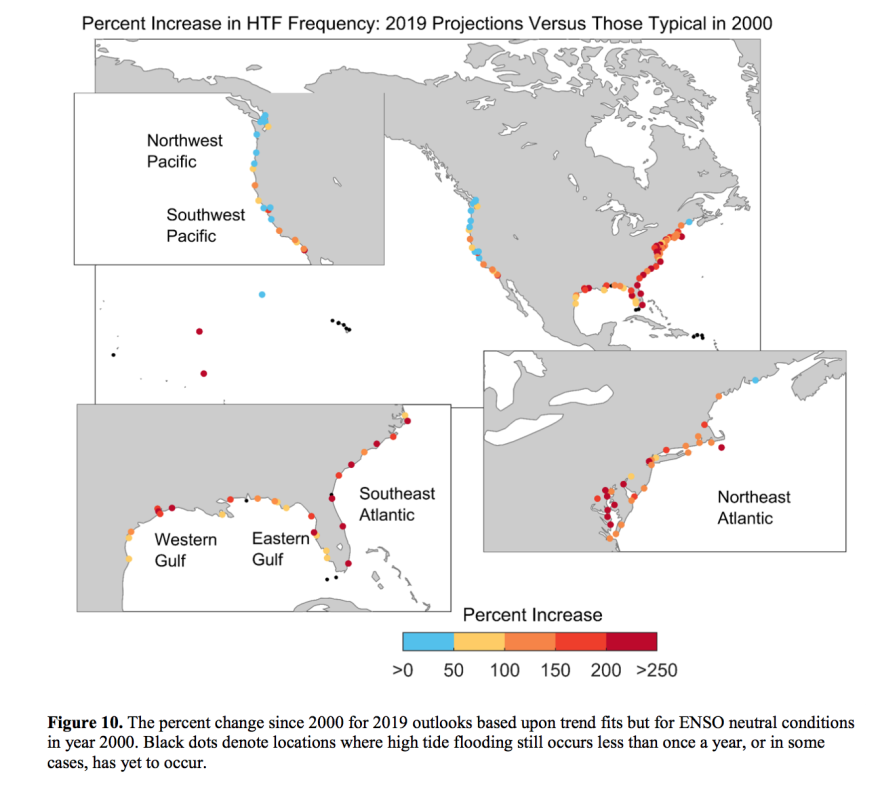A new high tide forecast from the National Oceanic and Atmospheric Administration calls for ongoing sea rise to nearly double the number of days with sunny day flooding over just two decades ago.
The forecast, issued Wednesday for the entire U.S. coast, concludes that flooding from tides is likely to change from a sporadic problem to a chronic one.
"The future's already here in terms of sea level rise impacts," said NOAA oceanographer and lead author William Sweet. "The current trajectory suggests a, let's say floodier future."
Numbers for South Florida appear low. That's because NOAA used one threshold across the U.S. that sets flood levels about a half foot higher than levels used by the National Weather Service for flood warnings. The higher level is more suited to higher ground on most coasts, Sweet said.
But that means NOAA recorded no flooding in Miami last year for the report. And it forecasts only one to three days of flooding in Miami this year and none in Key West.
The weather service found six flooded days with its lower threshold. Both Miami forecasts used measurements from gauges at Virginia Key.
"It doesn’t mean that you didn’t actually experience some water on the streets or stormwater infiltration or, you know, your citizens notifying the media saying, 'Hey, we’re flooding. What’s going on?'" Sweet said at a Wednesday briefing.

In the future, he said NOAA may begin tracking several different levels more suited for local areas. But for this report, they wanted to use a uniform standard to come up with a national look at the need for flooding fixes.
"Topography tends to be much flatter, so when we do reach those thresholds, you'll often see sizeable amounts of flooding" in South Florida, said chief scientist Greg Dusek.
Across the U.S., on average five days of flooding occurred in 2018 because of higher tides. That tied the record set in 2015, Sweet said. Hurricanes and Nor'easters along the Northeast and Gulf coasts also caused 12 locations to break their records for the number of days with sunny day flooding. Forty locations showed trends of accelerating high tides, the report found.
In Florida, Hurricane Michael helped break or tie flooding records in Apalachicola, where flooding occurred over 10 days, and Cedar Key, which had eight days of flooding. Michael slammed the Panhandle as a Catagory 5 storm in October.
Not counting hurricanes, high tide flooding usually occurs at smaller, local scales, the report said. Along much of the East and Gulf coasts, flooding was less than two feet above the threshold for flooding.
This year, the mild El Nino is expected to influence storm tracks and prevailing winds, Sweet said.






